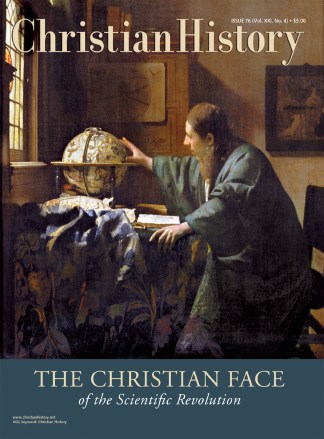William Harvey (1578-1657) founded the science of physiology by revolutionizing ideas on the movement of the heart and blood that had prevailed since Galen (ca. 130 – ca. 200). He not only discovered that the blood circulates and learned the true purpose of the venous valves and the heart’s motion, but he also contributed to embryology and strongly influenced the next generation of medical researchers, setting the stage for modern medical science.
The London physician did this while acting as the resident doctor for the poor at St. Bartholomew’s Hospital, a lecturer at the College of Physicians, a private practitioner, and later court physician to James I and personal physician to Charles I.
Harvey was influenced by the Calvinist environment of Cambridge (and indeed the Church of England) during his student years—his tutor at Cambridge, George Estey, was a clergyman and lecturer in Hebrew. Throughout his written works, Harvey reinterpreted the classical principle “Nature does nothing in vain” as a statement of God’s sovereign purposefulness in creating and sustaining the natural world (reflected in Isaiah 45:18).
In his Exercitationes de generatione animalium (Exercises on the Generation of Animals, 1651), for example, he praised the workings of God’s sovereignty in creation—which he termed “Nature.” The theme is the book’s leitmotiv: Nature “destines,” “ordains,” “intends,” “gives gifts,” “provides,” “counter-balances,” “institutes,” and “is careful.”
Harvey told a friend, “The examination of the bodies of animals has always been my delight; and I have thought that we might thence not only obtain an insight into the. … mysteries of Nature, but there perceive a kind of image or reflex of the omnipotent Creator himself.”
It was this keen sense of divine purpose that led Harvey to his momentous discovery of blood circulation. Having realized that the tiny valves in our veins allowed blood to flow only one way, Harvey struggled to determine God’s purpose in their construction. As he considered the size of the arteries and the position and unidirectionality of the veins’ valves, he concluded that the blood does not move back and forth in the veins and arteries, as once thought. Rather, it moves in a life-sustaining circuit, flowing out from the heart into the arteries and then returning through the veins. Echoing Leviticus 17:11 and 14, Harvey concluded, “life therefore resides in the blood (as we are informed in our sacred writings).”
Copyright © 2002 by the author or Christianity Today/Christian History magazine. Click here for reprint information on Christian History.










